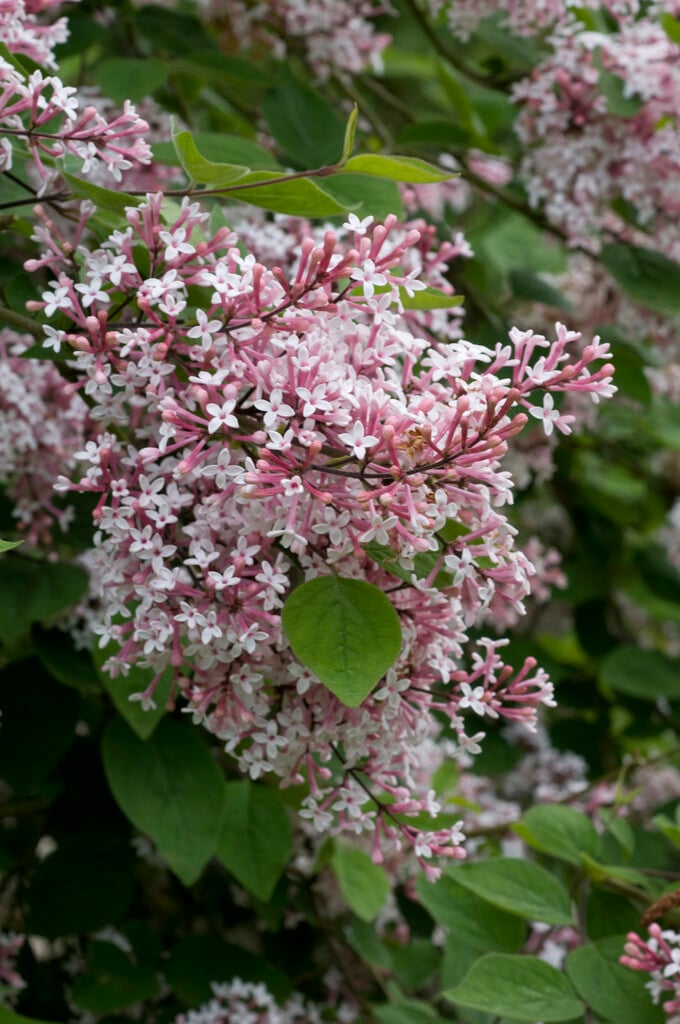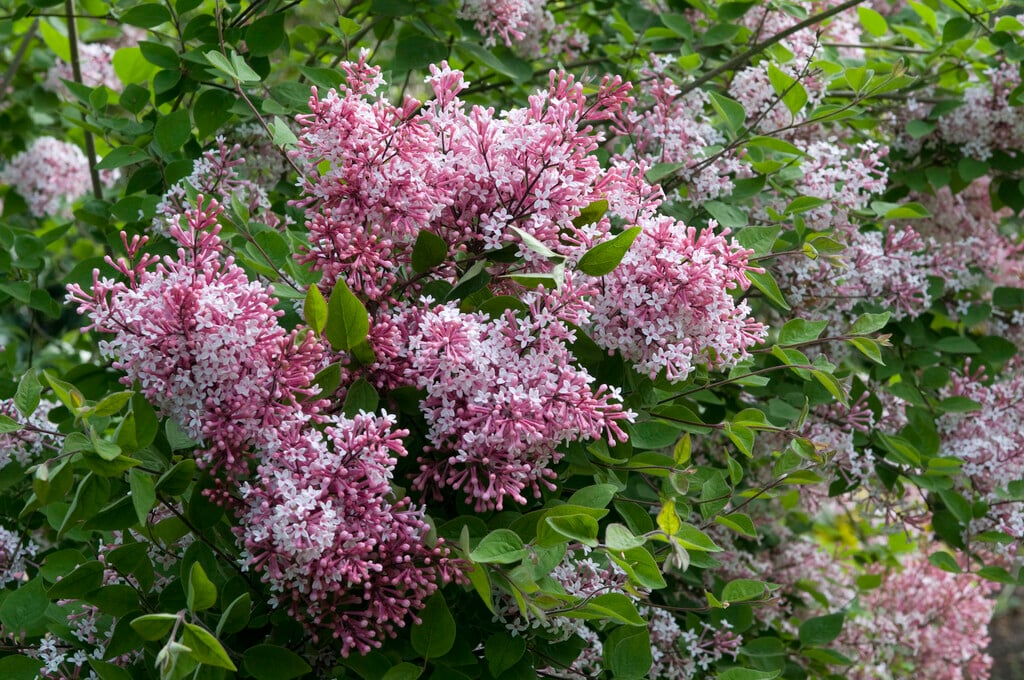Syringa pubescens subsp. microphylla 'Superba'
very little leaf lilac
'Superba' is a bushy, spreading medium-sized deciduous shrub with small, dark green, broadly-ovate leaves and fragrant, single, long-tubed, rosy-pink flowers in loose panicles
Size
Ultimate height
1.5–2.5 metresTime to ultimate height
10–20 yearsUltimate spread
1.5–2.5 metresGrowing conditions
Moisture
Moist but well–drained, Well–drainedpH
Alkaline, NeutralColour & scent
| Stem | Flower | Foliage | Fruit | |
| Spring | Green | |||
|---|---|---|---|---|
| Summer | Pink | Green | ||
| Autumn | Green | |||
| Winter |
Position
- Full sun
Aspect
South–facing or North–facing or West–facing or East–facing
Exposure
Exposed or Sheltered Hardiness
H6Botanical details
- Family
- Oleaceae
- Native to GB / Ireland
- No
- Foliage
- Deciduous
- Habit
- Bushy
- Genus
Syringa can be deciduous shrubs or trees, with simple, entire or rarely pinnate leaves and conical panicles of small, very fragrant, 4-lobed tubular flowers in late spring or early summer
- Name status
Accepted
How to grow
Cultivation
Easy to grow in most well-drained, fertile, humus-rich alkaline to neutral soils. Thrives in chalky ground and appreciates mulching when planted in full sun
Propagation
Propagate by softwood cuttings or layering in early summer. Grafting can be done in winter and chip budding in summer
Suggested planting locations and garden types
- Low Maintenance
Pruning
Pests
May be susceptible to lilac leaf-mining moth, willow scale and thrips
Diseases
May be susceptible to lilac blight, honey fungus, phytophthora, powdery mildews and bacterial canker (Pseudomonas Syringae)
Love gardening
Sign up to receive regular gardening tips, inspiration, offers and more
View our Privacy Policy
Get involved
The Royal Horticultural Society is the UK’s leading gardening charity. We aim to enrich everyone’s life through plants, and make the UK a greener and more beautiful place.

